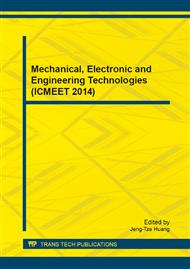p.100
p.104
p.108
p.113
p.118
p.122
p.127
p.134
p.146
Application Research of Virtual Prototype Technology in the Variable Stiffness Suspension Matching of Light Bus
Abstract:
In order to meet the ride comfort requirements of the light bus under no load and full-load condition,its rear suspension employs two-level variable stiffness leaf spring. For reasonably matching the two values of the variable stiffness and the damping force curve of the damper, one kind of virtual prototype technology was used. The virtual spring model of two-level variable stiffness was created in Adams-Chassis and the center-curve of the leaves was based at the free-state of the leaf spring. Then the front suspension, the rear suspension, the steering system, the powertrain & drineline system, the braking system, the wheels and bus body were respectively builded in Adams_Car, and they consituted the virtual assembly model of the light bus. So we could use the virtual model to conveniently test the performance of the ride comfort and handling stability under the no load and full-load state. Based on the ISO test standards, the virtual objective evaluation indexes were all calculated. According to these indexes, the two-level variable stiffness and the damping force curve were optimized. At last, the optimization results were verified by testing the optimized light bus. Experimental results shows that virtual optimization technology could play an important role in solving engineering problems.
Info:
Periodical:
Pages:
118-121
Citation:
Online since:
April 2014
Authors:
Price:
Сopyright:
© 2014 Trans Tech Publications Ltd. All Rights Reserved
Share:
Citation:


